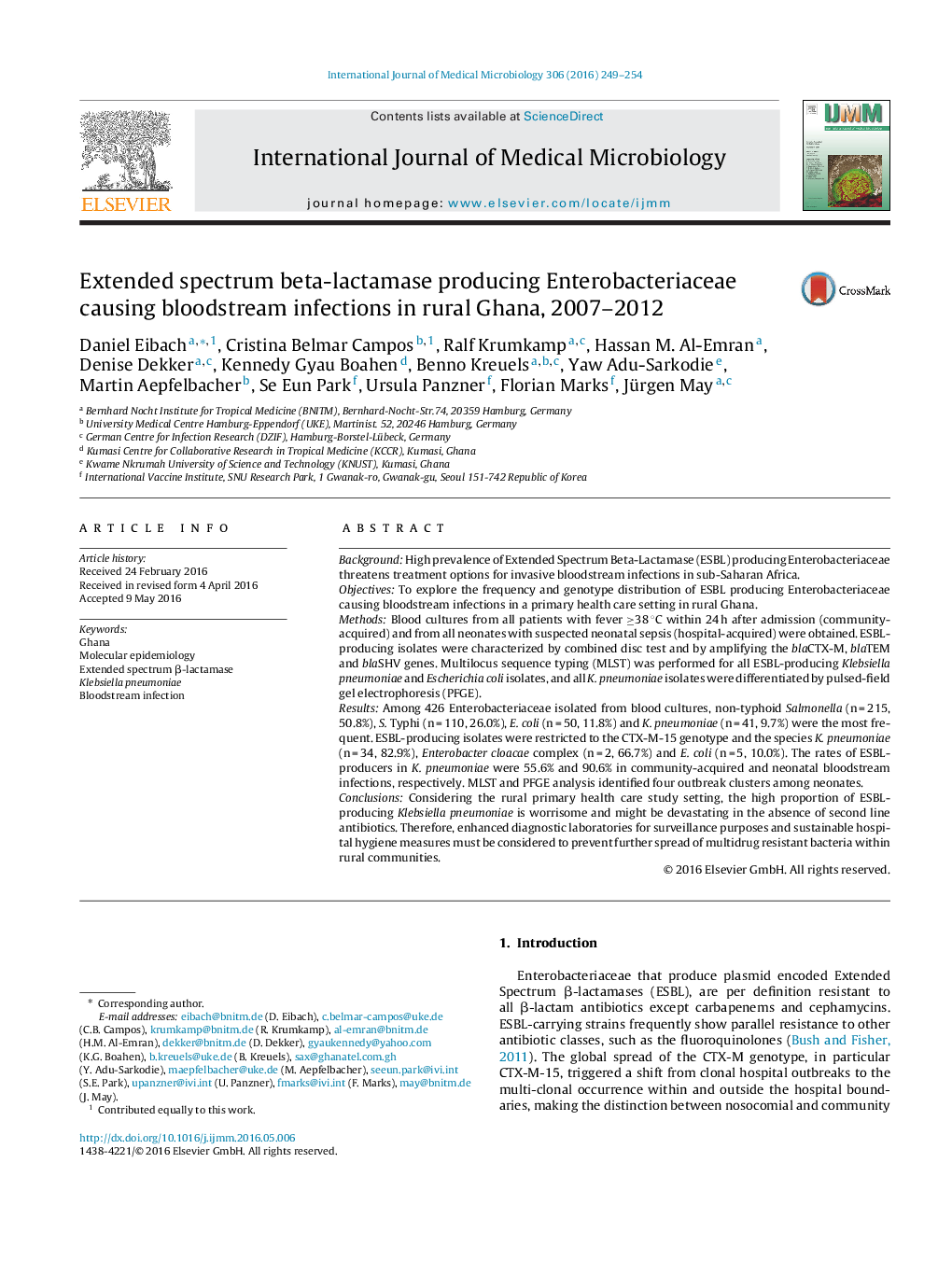| کد مقاله | کد نشریه | سال انتشار | مقاله انگلیسی | نسخه تمام متن |
|---|---|---|---|---|
| 2053815 | 1543680 | 2016 | 6 صفحه PDF | دانلود رایگان |
BackgroundHigh prevalence of Extended Spectrum Beta-Lactamase (ESBL) producing Enterobacteriaceae threatens treatment options for invasive bloodstream infections in sub-Saharan Africa.ObjectivesTo explore the frequency and genotype distribution of ESBL producing Enterobacteriaceae causing bloodstream infections in a primary health care setting in rural Ghana.MethodsBlood cultures from all patients with fever ≥38 °C within 24 h after admission (community-acquired) and from all neonates with suspected neonatal sepsis (hospital-acquired) were obtained. ESBL-producing isolates were characterized by combined disc test and by amplifying the blaCTX-M, blaTEM and blaSHV genes. Multilocus sequence typing (MLST) was performed for all ESBL-producing Klebsiella pneumoniae and Escherichia coli isolates, and all K. pneumoniae isolates were differentiated by pulsed-field gel electrophoresis (PFGE).ResultsAmong 426 Enterobacteriaceae isolated from blood cultures, non-typhoid Salmonella (n = 215, 50.8%), S. Typhi (n = 110, 26.0%), E. coli (n = 50, 11.8%) and K. pneumoniae (n = 41, 9.7%) were the most frequent. ESBL-producing isolates were restricted to the CTX-M-15 genotype and the species K. pneumoniae (n = 34, 82.9%), Enterobacter cloacae complex (n = 2, 66.7%) and E. coli (n = 5, 10.0%). The rates of ESBL-producers in K. pneumoniae were 55.6% and 90.6% in community-acquired and neonatal bloodstream infections, respectively. MLST and PFGE analysis identified four outbreak clusters among neonates.ConclusionsConsidering the rural primary health care study setting, the high proportion of ESBL-producing Klebsiella pneumoniae is worrisome and might be devastating in the absence of second line antibiotics. Therefore, enhanced diagnostic laboratories for surveillance purposes and sustainable hospital hygiene measures must be considered to prevent further spread of multidrug resistant bacteria within rural communities.
Journal: International Journal of Medical Microbiology - Volume 306, Issue 4, June 2016, Pages 249–254
